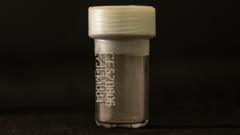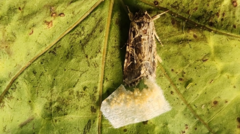First samples of Moon rock collected in almost half a century have arrived in the UK, marking a significant moment in space exploration.
Moon Dust: Rare Lunar Samples Arrive in the UK From China

Moon Dust: Rare Lunar Samples Arrive in the UK From China
Unique lunar particles from China promise groundbreaking scientific research as they touch down in the UK for the first time in decades.
The recent arrival of Moon dust samples from China, the first acquired in nearly 50 years, signifies a pivotal moment in lunar research. These rare grains, considered "more precious than gold dust" by Professor Mahesh Anand—who is the sole scientist in the UK to receive the loan of this material—are stored securely in Milton Keynes. The dust is part of the samples collected during China’s Chang'e 5 mission in 2020, which successfully collected and returned about 2 kilograms of lunar material.
During an event in Beijing, Prof. Anand collected the samples, emphasizing their uniqueness in helping reconstruct the history of the Moon and its formation. These tiny particles could potentially provide evidence supporting existing theories of the Moon's origins linked to a colossal impact event on early Earth.
Following a tradition of global scientific collaboration, China is now sharing these invaluable samples with researchers worldwide. Prof. Anand and his team, tasked with maintaining strict contamination protocols in the lab, are preparing to conduct intricate analysis on the moon dust to explore its secrets.
As the sample work commences, preparation involves meticulous steps to ensure the samples remain uncontaminated, given the long journeys they have made from space to Earth. The lab is equipped with advanced machines capable of analyzing the elemental composition of the lunar dust, setting the stage for groundbreaking discoveries regarding the Moon and its relationship with Earth.
The year-long research project aims to unravel the mysteries contained within the grains of Moon dust. Prof. Anand expresses hope for ongoing international collaborations, heralding a new era in lunar research that mirrors the scientific exchanges established during the Apollo missions.
China’s advancements in lunar exploration, including future missions to retrieve more samples from the Moon’s far side, fuel anticipation for transformative insights in our understanding of the cosmos. With these rare samples now in the UK, scientists stand at the threshold of new discoveries poised to reshape our comprehension of the Moon and its geological history.
During an event in Beijing, Prof. Anand collected the samples, emphasizing their uniqueness in helping reconstruct the history of the Moon and its formation. These tiny particles could potentially provide evidence supporting existing theories of the Moon's origins linked to a colossal impact event on early Earth.
Following a tradition of global scientific collaboration, China is now sharing these invaluable samples with researchers worldwide. Prof. Anand and his team, tasked with maintaining strict contamination protocols in the lab, are preparing to conduct intricate analysis on the moon dust to explore its secrets.
As the sample work commences, preparation involves meticulous steps to ensure the samples remain uncontaminated, given the long journeys they have made from space to Earth. The lab is equipped with advanced machines capable of analyzing the elemental composition of the lunar dust, setting the stage for groundbreaking discoveries regarding the Moon and its relationship with Earth.
The year-long research project aims to unravel the mysteries contained within the grains of Moon dust. Prof. Anand expresses hope for ongoing international collaborations, heralding a new era in lunar research that mirrors the scientific exchanges established during the Apollo missions.
China’s advancements in lunar exploration, including future missions to retrieve more samples from the Moon’s far side, fuel anticipation for transformative insights in our understanding of the cosmos. With these rare samples now in the UK, scientists stand at the threshold of new discoveries poised to reshape our comprehension of the Moon and its geological history.



















